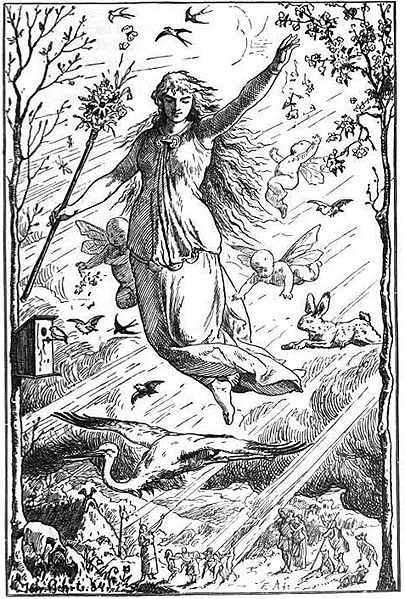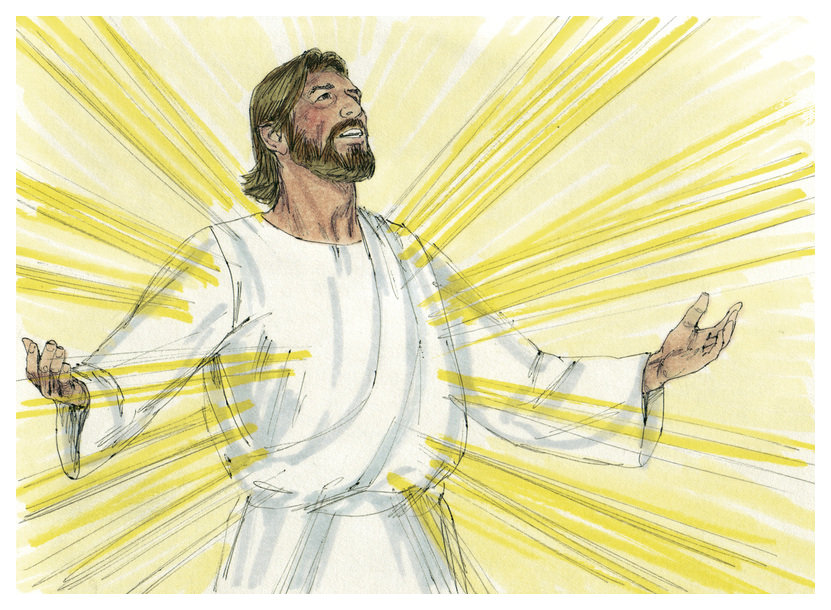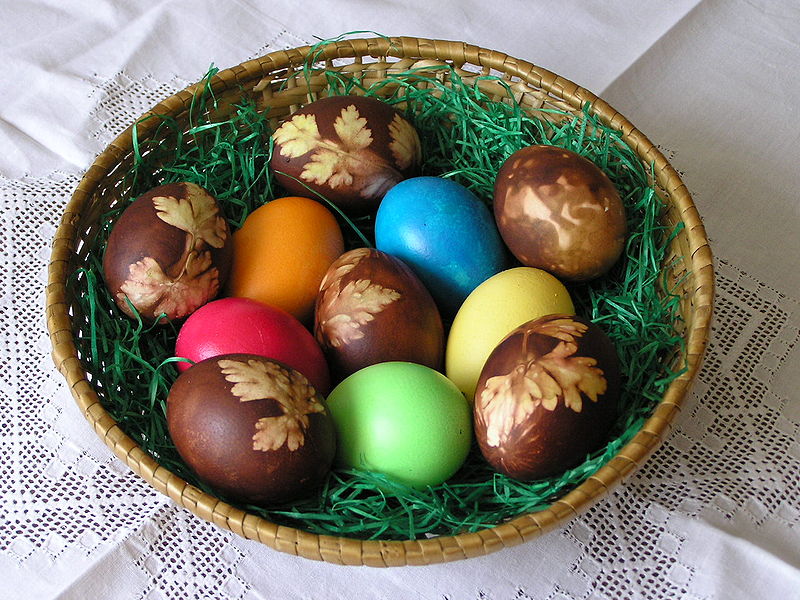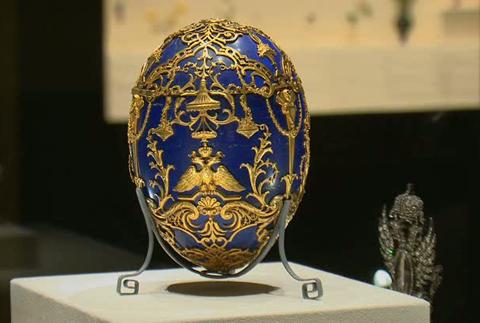OSTARA: PAGAN GODDESS OF SPRING

Public Domain. Wikimedia Commons
Ostara, an obscure Germanic goddess, lent her name to the annual season of Easter. Anglo-Saxon accounts mention feasts in her honor held in April.
EASTER: CHRISTIAN CELEBRATION OF CHRIST’S RESURRECTION

Wikimedia Commons
The early Christian Church superimposed its teaching on many ancient holidays, among them celebrations to welcome Spring’s return.
Easter is the most significant celebration on the Christian calendar. It marks Jesus Christ’s resurrection from death into life eternal. Christians believe that if they believe in Christ and His Resurrection, they will have eternal spiritual life. Their greeting on Easter morning: “He is Risen.” Response: “He is Risen Indeed.”
EASTER SYMBOL: THE EGG

Photo by L. Kenzel. Wikimedia Commons
Many cultures celebrate the coming of spring with eggs – often dyed, decorated, & given as gifts. One of the expenses listed in Edward I’s household records is 18 pence paid to dye 450 eggs decorate them with gold leaf. [Hmmm. 18 pence in the 13th century equals about US$60 today. I guess gold leaf was less expensive then.]
The egg has a long association with life. Many cultures imagine the world’s origin in an enormous egg. Christians draw symbolism from the egg’s hard shell, which they equate with the tomb that housed Jesus after his death by crucifixion. The Christian metaphor for Jesus leaving the tomb is the cracking of an egg to release its contents.
FABREGE EGGS
The most famous Easter eggs are those created by the House of Faberge (1885-1917) in Tsarist St. Petersburg

The Faberge tradition began when Tsar Alexander III gave the first Faberge egg to Tsarina Maria Fedorovna. She was delighted. Tsar Alexander appointed Peter Carl Faberge (1846-1920) as “goldsmith by special appointment to the imperial crown.” Imperial eggs became an annual event. After 1887, no one knew what the egg would contain until the gift was opened. The only requirement: Each Faberge egg must have a surprise inside.
Easter is a time of renewal
A time when when each of us can experience rebirth
Open up yourself to find the surprise inside.
(Research taken from http://homecooking.about.com/od/foodhistory/a/easteregghistry.htm and http://en.wikipedia.org/wiki/Main_Page

Sandra Wagner-Wright holds the doctoral degree in history and taught women’s and global history at the University of Hawai`i. Sandra travels for her research, most recently to Salem, Massachusetts, the setting of her new Salem Stories series. She also enjoys traveling for new experiences. Recent trips include Antarctica and a river cruise on the Rhine from Amsterdam to Basel.
Sandra particularly likes writing about strong women who make a difference. She lives in Hilo, Hawai`i with her family and writes a blog relating to history, travel, and the idiosyncrasies of life.

